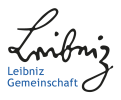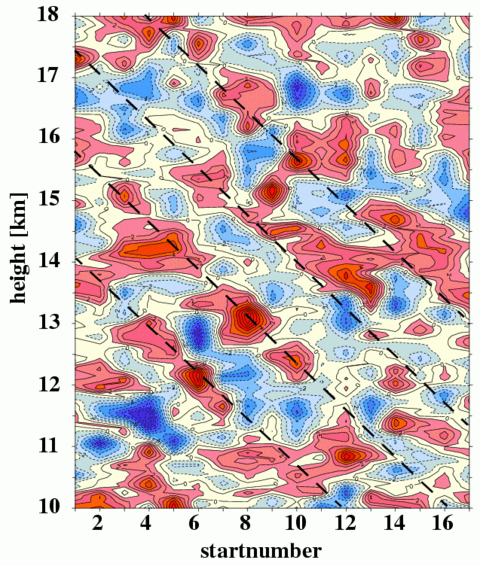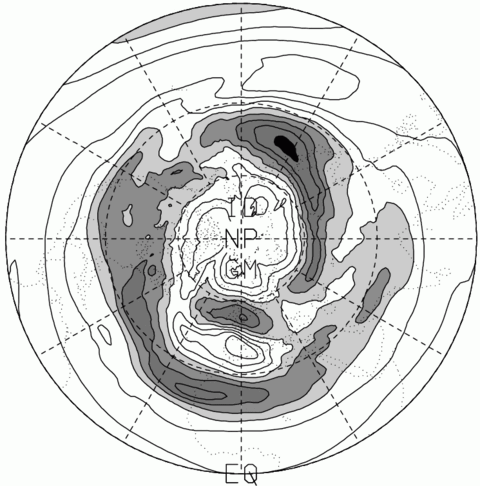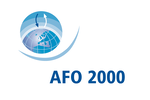AFO2000 LEWIZ - Results
On the appearance of inertia-gravity waves on the north-easterly side of an anticyclone
The appearance of inertia-gravity waves over Northern Germany between the 17 and 19 December 1999 is investigated. During this period a diffluent region downstrem of the jet and north-eastwards of an anticyclone occours in connection with teh seconde phase of a poleward Rossby wave breaking event over the North Atlantic European region. A series of 3-hrly radiosonde ascents and a permanent measuring VHF-radar are used to examine the properties of inertia-gravity waves.
The diagnostic results based on a linear theory show a characteristic horizontal wavelength of 890 km and a vertical wavelength of abouit 2 - 3 km in the stratosphere and about 3.3 km in the troposphere. The inertia-gravity waves waere amplified downstream of the jet. The phase propagation was upstream with an oscillation period of about 12.5 hr, nut the energy propagation was upward in the stratosphere and downward in the troposphere with n energy source in the tropopause region. The inertia-gravity waves propagated through the middle stratosphere because strong zonal winds occoured over the whole altitude region due to the location on the edge of he polar vortex.
Peters, D., P. Hoffmann and M. Alpers (2003): On the appearance of inertia-gravity waves on the North-Easterly side of an anticyclone. Met. Z. (12(1): 25-35)
Modeling of a poleward downstream Rossby wave breaking (P2) event and associated inertia-gravity wave
The status of the project is due to the plan: the field data are being collected, processed and archived; the analysis and modeling process is under way and the synthesis is prepared.
1) Field observations: Up to now (September 2002) nine field campaigns have been conducted in the frame of our LEWIZ project, including 111 radiosonde launches and a number of radar and LIDAR profiles at the location of Kühlungsborn (54° N, 11.8° E) during Rossby wave breaking with the focus on poleward downstream breaking events (P2). As supporting information routine radiosonde observations from the German Weather Service (DWD) as well as analysis products from DWD, the European Center for Medium-Range Weather Forecasts (ECMWF) and the National Center for Environmental Prediction (NCEP) have been gathered.
2) Analysis and modeling: The Fifth Generation Mesoscale Model (MM5) has been set up and used for hind casting the observations and certain process studies. As an example we present here results for the observation period 06.-08.03.2002, where 16 radiosondes have been released with a density of 3 hours and an approximate ascent height of 30 – 35 km. Also, continuous VHF radar observations at Kühlungsborn are available covering up to 15 km. From the analysis of all data we found inertia-gravity waves (IGW) with a horizontal wavelength of about 1000 km, a vertical wavelength of about 2 km and an intrinsic period of 12 h with an upward energy flux in the lower stratosphere and downward in the troposphere. That means, the energy source is placed in the tropopause region.
2.1) Validation exercise: Verification of the MM5 model results with analysis products of DWD, NCEP and ECMWF and field observations show pretty good agreement at vertical scales above 2 km. We found, that the modeled IGW-s are more intense than in the analyses but less than observed.
2.2) Process studies: Model runs for different idealized conditions are under way with the aim to isolate the contribution of Rossby wave breaking to IGW formation. We found evidence for that process in a run without terrain height, bottom friction and moisture. However, some cases indicate that part of the IGW-s above Kühlungsborn is triggered by mountains.
3) Synthesis: The generation and transformation process of IGW-s is also studied in the literature and will be in the focus of our future work beside further field campaigns for other types of Rossby wave breaking. By his, we examine the associated cross-tropopause transport and mixing.
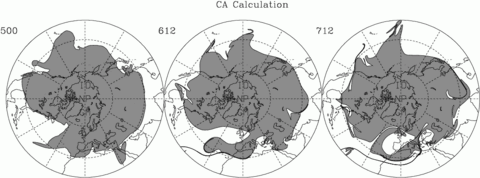
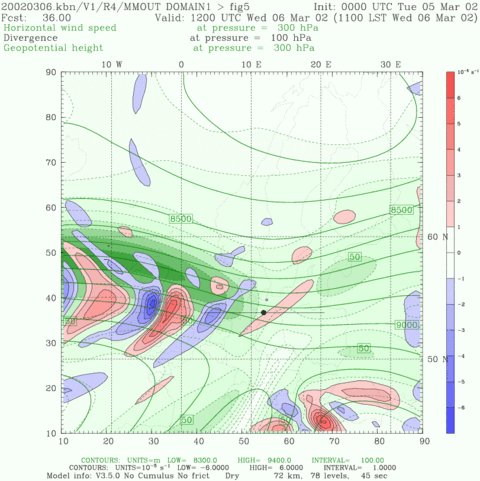
Zülicke, Ch., A. Serafimovich, M. Alpers, P. Hoffmann and D. Peters (2002): LEWIZ - Inertia-gravity waves and their connection to breaking Rossby waves (Poster at the AFO2000 Statusseminar, 07.-09.10.2002, Schliersee)
Privatdozent Dr. habil. Dieter H.W. Peters
Tel. : +49 (0) 38293 68 380
Fax : +49 (0) 38293 68 50


